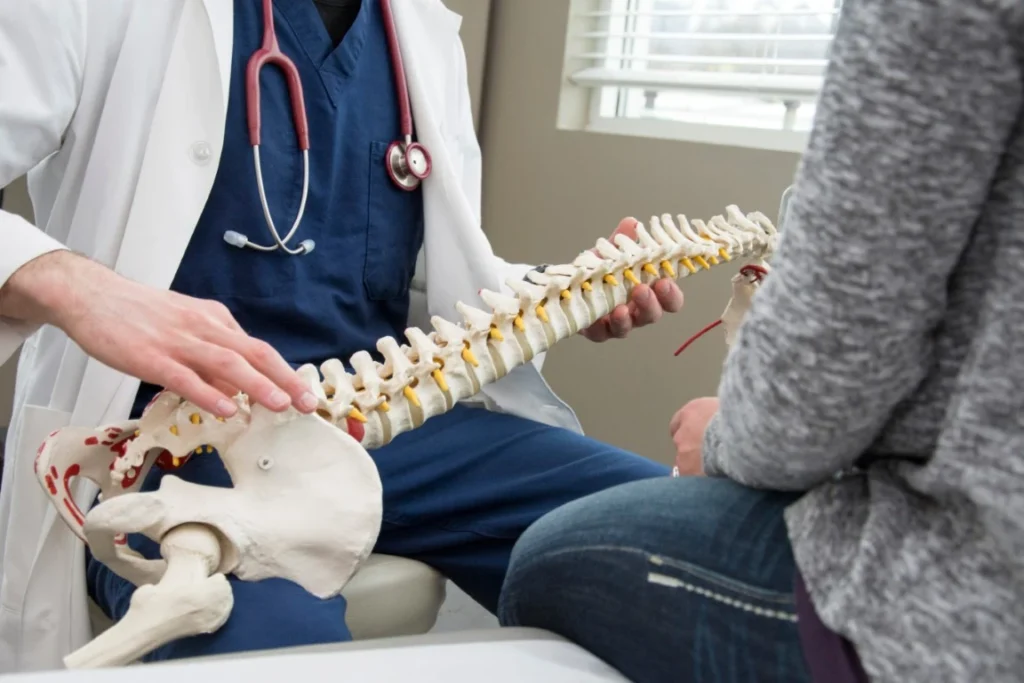
It’s not uncommon to feel a little sore after a chiropractic appointment. Whether you’re recovering from a car accident or trying to alleviate chronic discomfort, some muscle soreness is to be expected. However, you may not be interested in using pain medications to treat this discomfort and may instead seek alternative solutions.
For individuals seeking a more holistic approach to healing, ice packs and heating pads may be the ideal solution. However, it is incredibly important to understand when to use each one. In this blog, we’ll discuss the benefits of ice and heat after a chiropractic appointment and which is best for the discomfort you’re experiencing.
How Do Ice Packs Help With Healing
Ice packs help reduce swelling and numb pain after an injury, offering quick relief during the early stages of recovery. The cold temperature slows blood flow to the affected area, which helps minimize inflammation and tissue damage. They can also ease discomfort from minor sprains, strains, or bruises.
Beyond injuries, ice packs may provide relief for headaches or post-workout soreness. Some key benefits include:
- Reduces swelling and inflammation
- Numb pain and discomfort
- Prevents further tissue damage
- Eases muscle soreness and tension
- Provides quick, localized relief
The Benefits of Using Heating Pads
Heating pads help relax muscles, improve flexibility, and promote circulation, which supports healing after the initial phase of inflammation. The gentle warmth increases blood flow, delivering oxygen and nutrients to injured tissues. This process can help relieve stiffness, spasms, and chronic pain caused by overuse or strain.

Heating pads are also comforting and promote relaxation, making them ideal for recovery. Some additional benefits to regular use of a heating pad include:
- Relaxes tight or sore muscles
- Improves blood flow and circulation
- Reduces stiffness and spasms
- Enhances comfort and relaxation
- Supports tissue healing and recovery
When Should You Use Each Option?
While ice packs and heating pads are incredibly beneficial, it is essential to understand when to use each, as the results of each will vary significantly. If you are actively recovering from a recent chiropractic appointment, please consider the following guidelines.
Use ice packs when:
- You are experiencing acute swelling, pain, or inflammation after your adjustment.
- There is muscle soreness or tenderness at the treatment site.
- You notice bruising or redness from soft tissue manipulation.
- You want to numb sharp or throbbing pain and reduce localized swelling.
Use heating pads when:
- You’re dealing with stiffness, tight muscles, or lingering tension after the initial inflammation subsides.
- You want to promote circulation and relaxation before stretching or light activity.
- You’re experiencing chronic soreness rather than new or acute pain.
- You wish to ease joint or muscle stiffness in preparation for your next chiropractic session.
If you’re on the fence about whether ice packs or heating pads are best, don’t hesitate to consult with your chiropractor. They can provide you with expert support, even if you’ve already returned home after your appointment.
How Soon After Your Appointment Should You Use Each?

In addition to knowing which tool is best for your recovery process, it is equally important to know how soon after your appointment to use each. In most cases, it is perfectly safe to use ice packs and heating pads immediately after your chiropractic appointment. However, you should exercise extreme caution when doing so.
Neither option should be used for more than 15 minutes at a time, as overuse can lead to tissue irritation. If you are using an ice pack, ensure it is wrapped tightly in a cloth to prevent direct contact with your skin. You should also avoid direct contact with heating pads, as this may accidentally result in burns.
When it comes to using each option, it is always best to listen to your body’s reaction. Consider alternating between the use of hot and cold compresses. If you ever feel uncomfortable, it is best to discontinue use of these therapies until you can consult a trusted chiropractic professional.
The Importance of Avoiding Overuse
Although heating pads and ice packs are effective ways to alleviate discomfort after a chiropractic appointment, it is essential to avoid overuse. Both therapies are most effective when used in moderation, supporting the body’s natural recovery process without overstimulating or numbing tissues for an extended period.
Excessive use of ice packs can constrict blood vessels and slow circulation, preventing necessary nutrients from reaching muscles and joints. This can lead to stiffness or even increased soreness once the cold is removed. Similarly, prolonged use of heating pads can cause inflammation to worsen by expanding blood vessels too much.
This overuse may potentially lead to swelling and irritation of your recently adjusted body parts. Chiropractic care aims to restore alignment and encourage balanced function within the nervous and musculoskeletal systems. Overusing temperature therapy can interfere with those benefits by dulling the body’s ability to signal pain appropriately or by overstressing tissues that are trying to heal.
Instead of relying heavily on ice or heat, it’s best to allow the body to adjust naturally after treatment, using temperature therapy sparingly as a supportive measure. This approach helps maintain the effectiveness of chiropractic adjustments and encourages steady, long-term recovery.

Turn to Muscle & Joint Chiropractic for Reliable Care
Chiropractic care is a wonderful way to recover from a variety of injuries. By incorporating ice packs and heating pads into your recovery process, you can trust that you’re doing everything in your power to heal more quickly and with minimal discomfort. At Muscle & Joint Chiropractic, our team can provide you with reliable recovery strategies to ensure you get the most out of every second of your care.
When you’re ready to schedule a chiropractic appointment to address a recent or chronic injury, don’t hesitate to contact us today.







